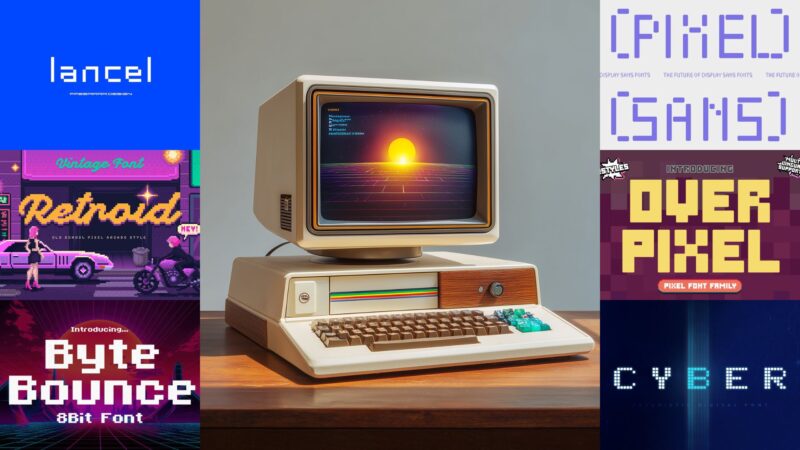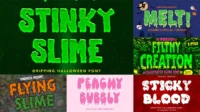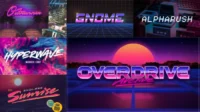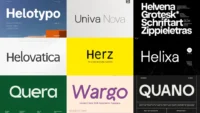In this article:
- 30 Fun Computer Fonts for Techy Designs
- What Are Computer Fonts, Really?
- The Evolution of Computer Fonts: From Pixels to Perfection
- System Fonts: The Unsung Heroes of Digital Design
- Choosing the Right Computer Font for Your Project
- The Science Behind Screen-Optimized Typography
- Variable Fonts: The Future of Computer Typography
- Common Computer Font Mistakes (And How to Avoid Them)
- Tools and Resources for Computer Font Management
- The Psychology of Computer Font Choice
- Accessibility and Computer Fonts
- Legal Considerations: Font Licensing in the Digital Age
- The Future of Computer Fonts
- Expert Tips for Working with Computer Fonts
- Conclusion: The Art and Science of Digital Typography
Think about it – every email you send, every website you visit, every app you use relies on computer fonts to communicate. Yet most people take them completely for granted. Not us, though. We’re about to dive deep into the fascinating world of digital typography.
Computer fonts have come a long way since the pixelated days of early computing. What started as basic bitmap characters has evolved into sophisticated typeface systems that can render beautifully at any size, support multiple languages, and even adapt to different screen technologies.
In this comprehensive guide, we’ll explore everything you need to know about computer fonts – from understanding the technical basics to choosing the perfect typefaces for your projects. So grab your favorite caffeinated beverage, fire up your design software, and let’s embark on this typographic journey together!
30 Fun Computer Fonts for Techy Designs
Retro Byte
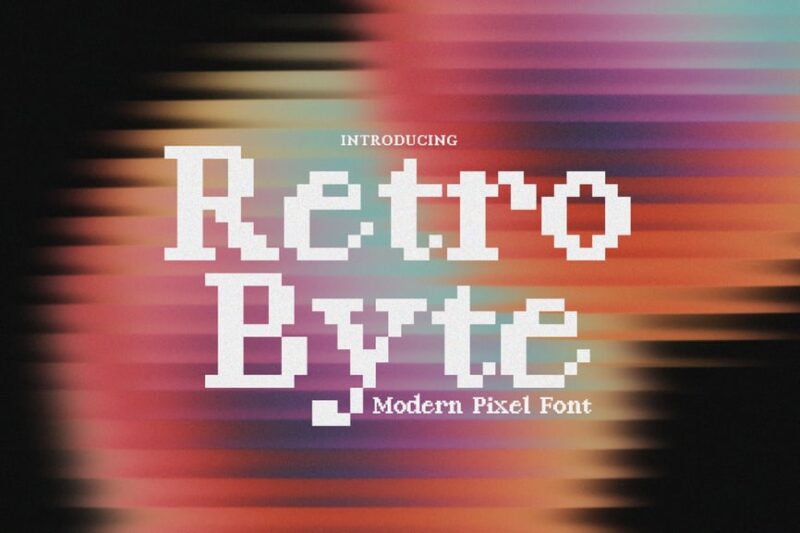
Retro Byte is a vintage 8-bit video game font that captures the essence of classic arcade games. This decorative typeface is perfect for creating nostalgic gaming graphics, retro-inspired digital art, and playful designs that evoke the golden age of pixelated entertainment.
Over Pixel
![]()
Over Pixel is a retro-inspired sans-serif font with a pixelated aesthetic. This typeface captures the essence of classic video games, making it perfect for nostalgic designs, game-related graphics, and retro-themed projects.
System Code
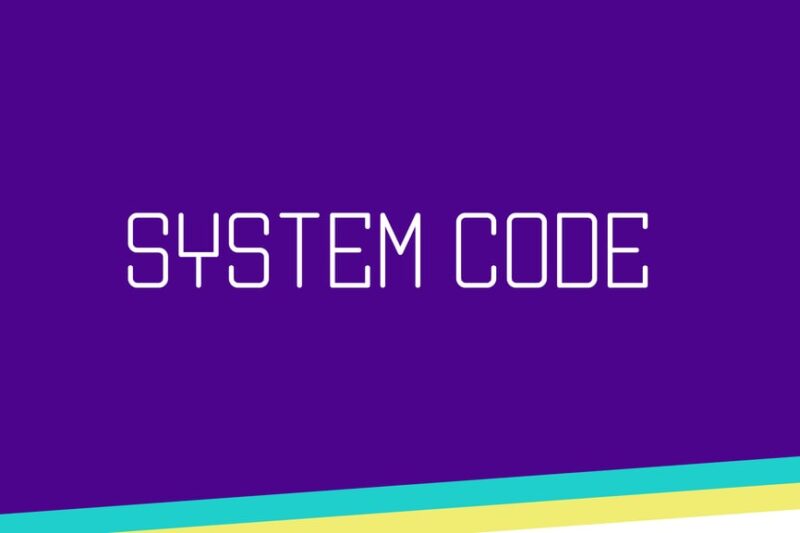
System Code is a decorative monoline font designed to evoke the aesthetics of programming and technology. Its unique structure makes it perfect for tech logos, coding-related graphics, and futuristic design projects in both digital and print media.
Rytech
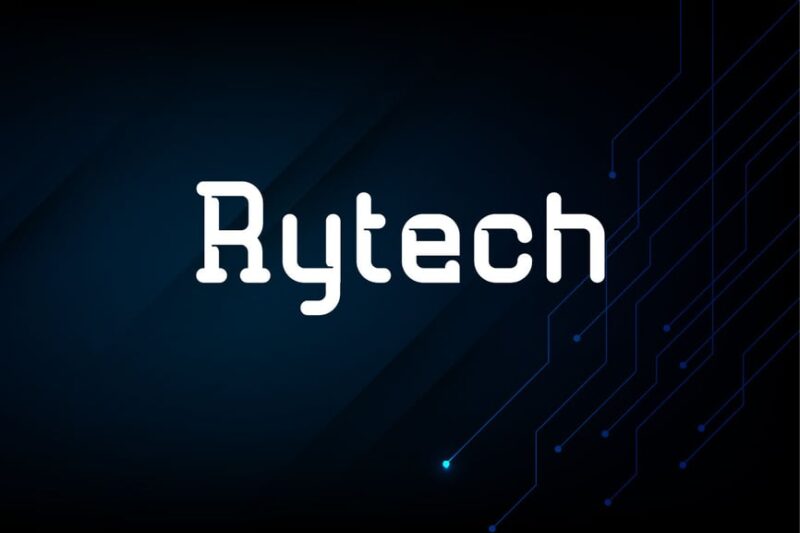
Rytech is a modern, technology-inspired sans-serif display font. Its sleek and digital appearance makes it perfect for tech-related designs, futuristic logos, and contemporary digital media projects.

Get 300+ Fonts for FREE
Enter your email to download our 100% free "Font Lover's Bundle". For commercial & personal use. No royalties. No fees. No attribution. 100% free to use anywhere.
Digitechno
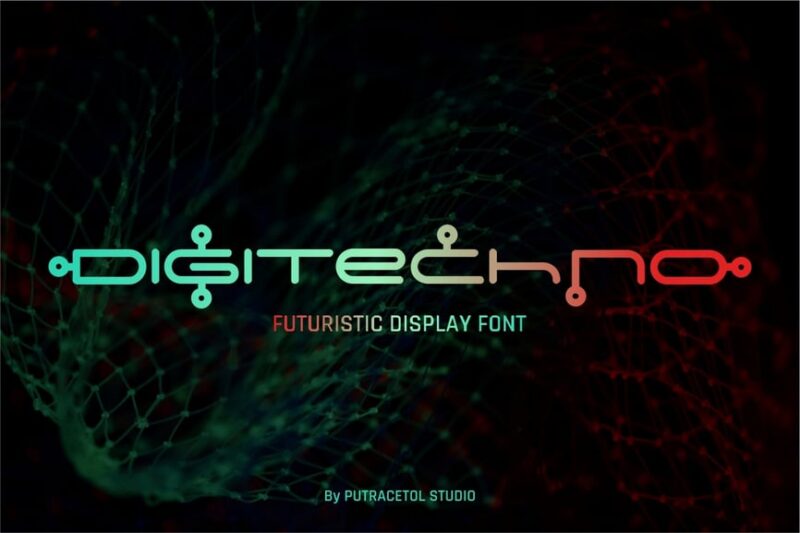
Digitechno is a futuristic sci-fi font with a robotic feel. This typeface includes unique symbols, making it ideal for sci-fi themed designs, technology branding, and innovative digital interfaces.
Billy
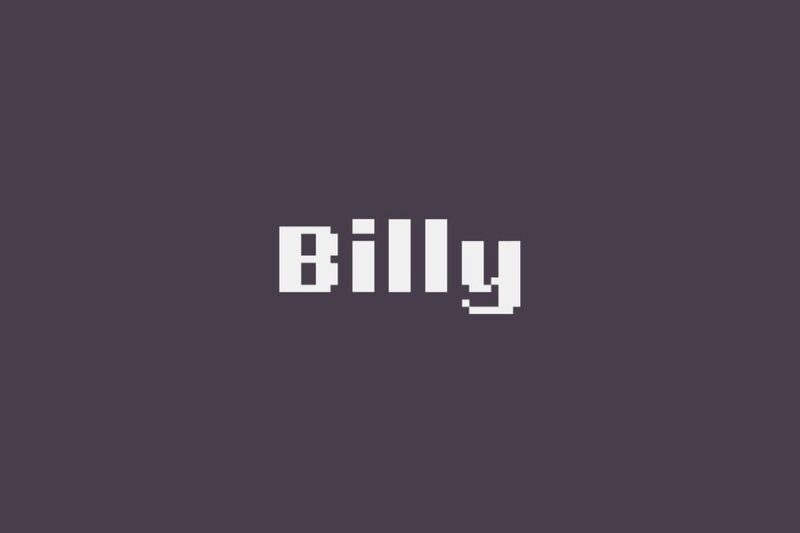
Billy is a versatile sans-serif font with variable weight options. Its fluid, water-inspired design gives it a unique character, suitable for modern branding, editorial layouts, and creative design projects.
Pixel
![]()
Pixel is a decorative sans-serif font that embraces the pixelated look of early digital displays. Its tech-inspired design makes it ideal for creating retro-futuristic graphics, game UI elements, and tech-related branding.
Game Paused
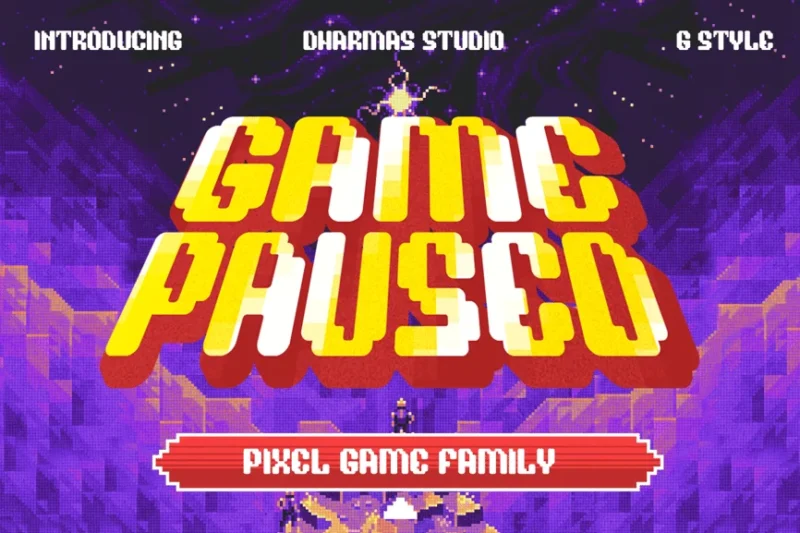
Game Paused is a modern, tech-inspired font combining sans-serif characters with decorative symbols. Its unique blend of futuristic design and playful elements makes it perfect for gaming-related projects, tech branding, and creative digital media.
Retroid
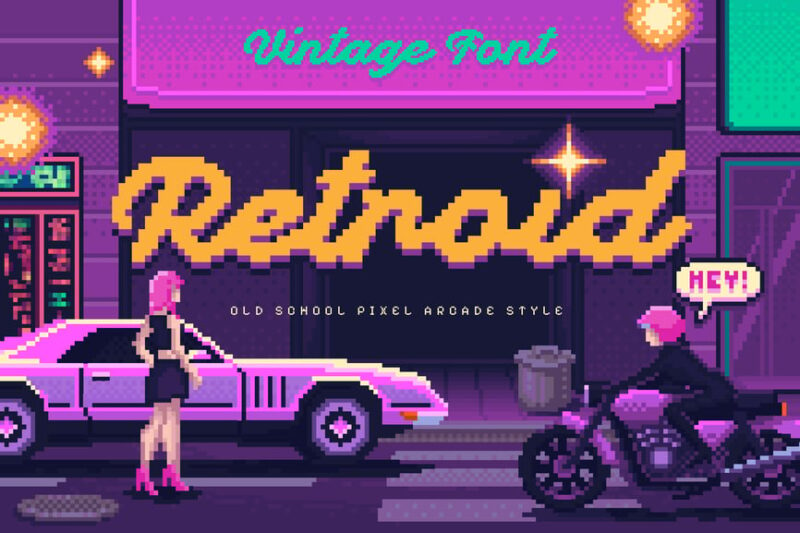
Retroid is a decorative script font with a pixelated twist. This handwritten-style typeface captures the essence of arcade games, making it ideal for retro gaming designs, nostalgic branding, and playful digital projects.
Digital Moneter
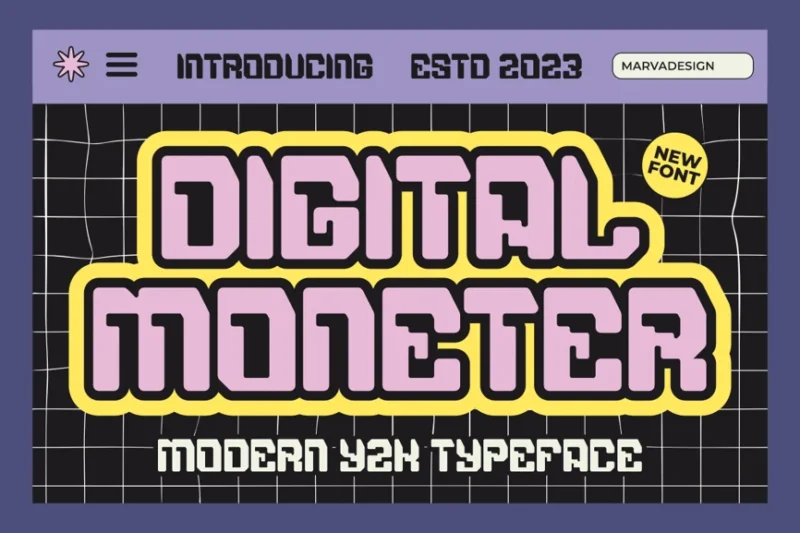
Digital Moneter is a modern, techno-inspired decorative font with a Y2K aesthetic. Its pixelated design and futuristic feel make it perfect for creating nostalgic millennial-era graphics, tech-themed posters, and digital art projects.
Blocky Fun Display Font
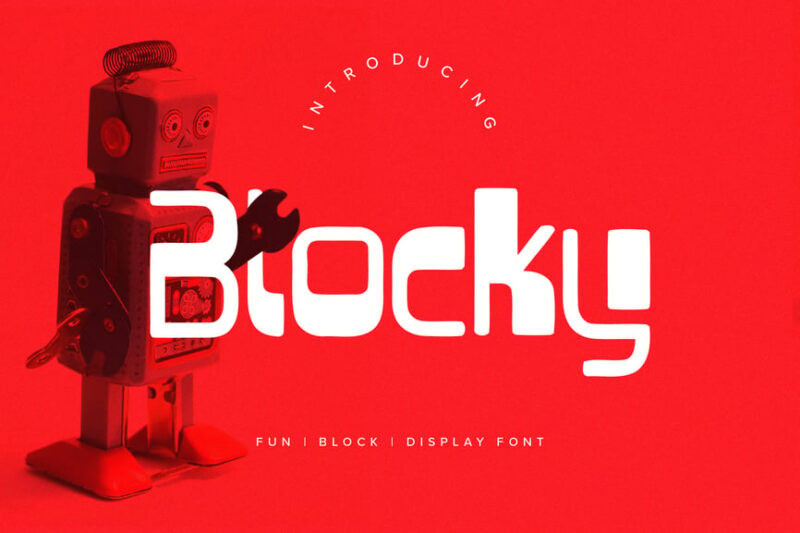
Blocky Fun Display Font is a playful sans-serif typeface with a robotic, block-like structure. Its quirky design makes it ideal for children’s products, fun tech branding, and creative display purposes in digital and print media.
Z W Error System
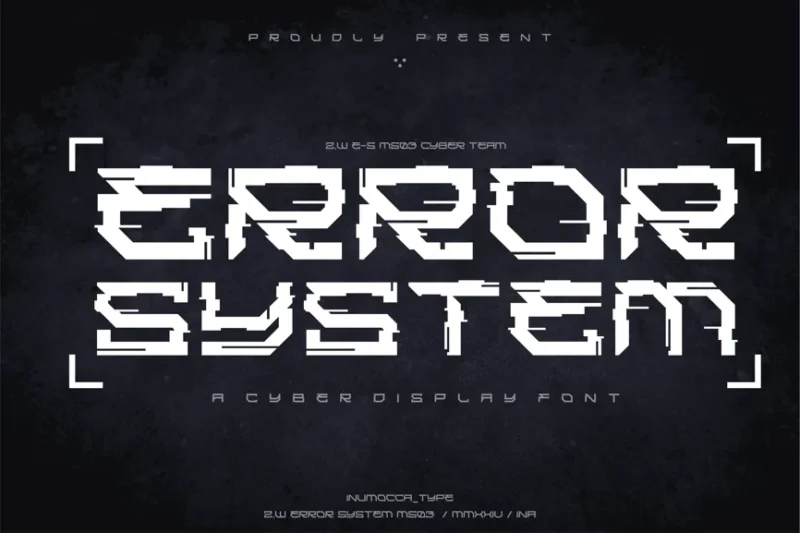
Z W Error System is a decorative glitch font designed to mimic broken or eroded text. This unique typeface is perfect for creating glitch art, representing system errors in design, or adding a distressed, tech-inspired look to graphics.
Cyber
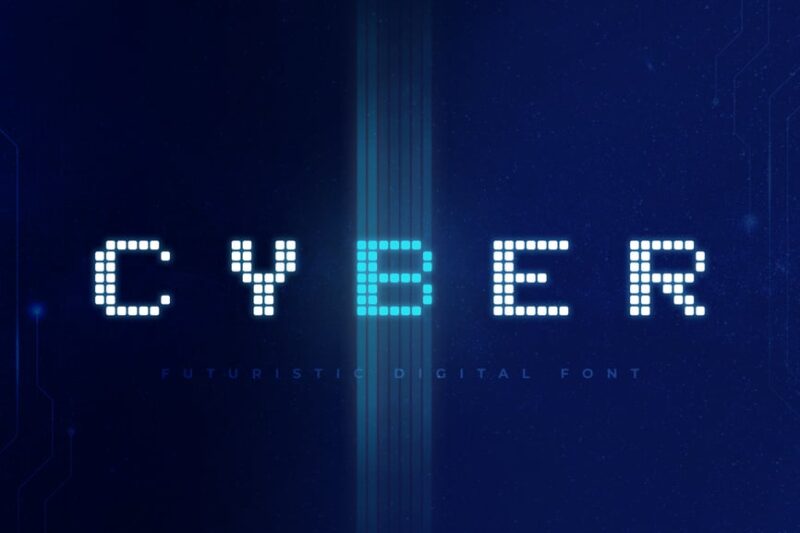
Cyber is a technology-inspired decorative font with a futuristic edge. Its sleek and modern design makes it ideal for tech logos, sci-fi themed projects, and forward-thinking brand identities in the digital space.
Brick Byte
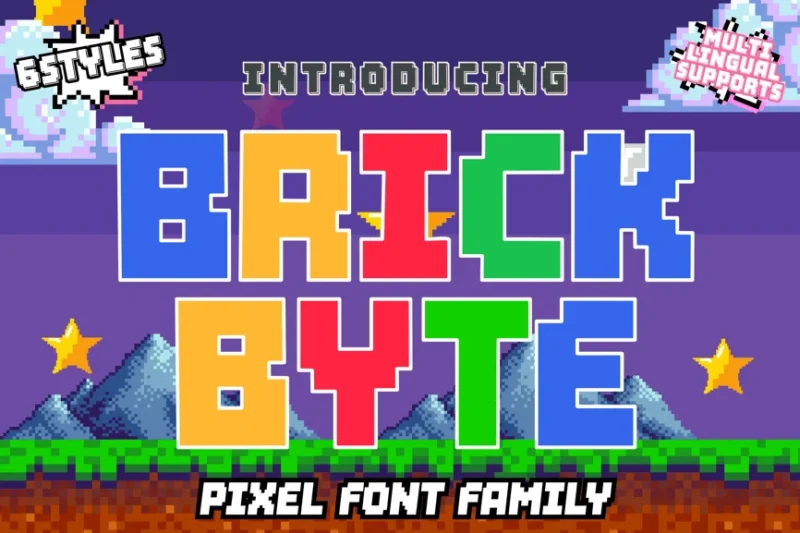
Brick Byte is a pixelated sans-serif font with a blocky, geometric structure. This typeface is ideal for creating retro-inspired designs, game interfaces, and tech-related graphics that require a bold, chunky aesthetic.
Gothic Byte
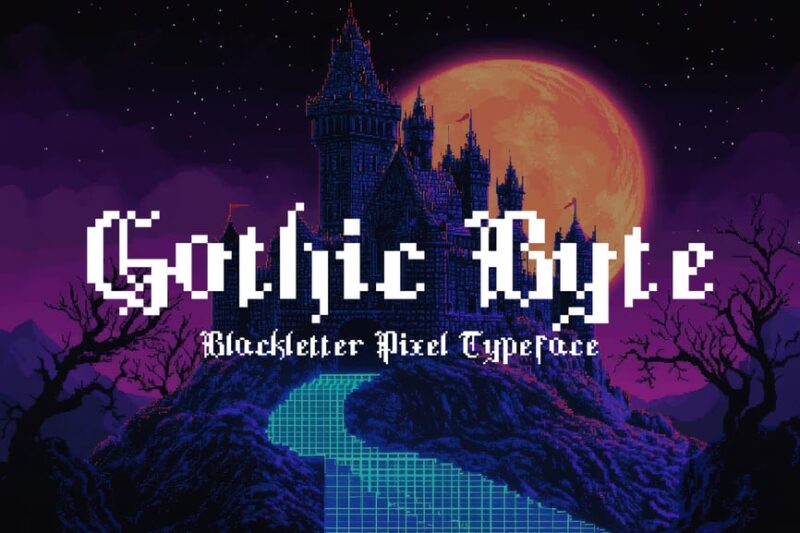
Gothic Byte is a unique decorative gothic font that blends traditional blackletter style with 8-bit pixel art. This typeface is perfect for creating gothic-inspired digital designs, retro game graphics, and unique branding that combines old and new aesthetics.
ByteBounce
![]()
ByteBounce is a decorative 8-bit pixel font that captures the essence of classic video games. Its retro digital look makes it ideal for creating nostalgic game interfaces, pixel art projects, and playful tech-inspired designs.
Nuixyber Next
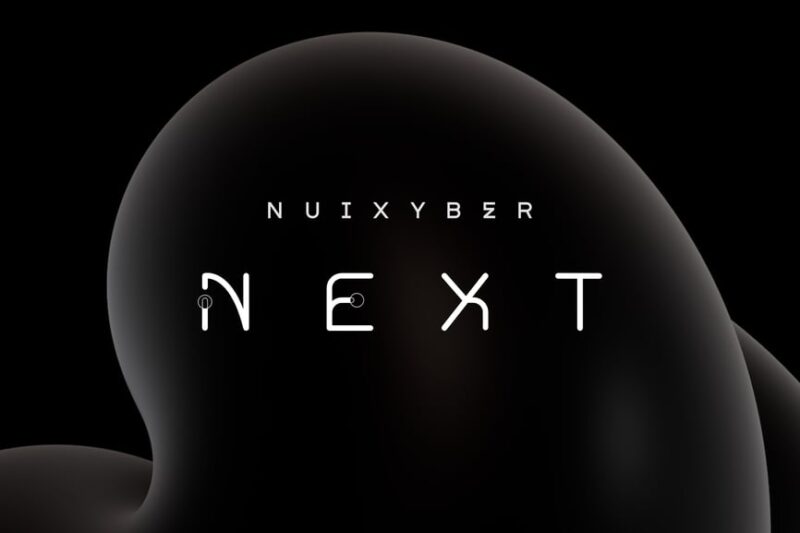
Nuixyber Next is a futuristic space science font with a strong technological influence. Its unique design makes it perfect for sci-fi themed projects, tech branding, and creating forward-looking digital interfaces and graphics.
Sandborg

Sandborg is a robotic display font with a modern, technological edge. This sans-serif typeface is ideal for creating futuristic logos, tech-related marketing materials, and innovative digital designs that require a bold, mechanical aesthetic.
Getboreg
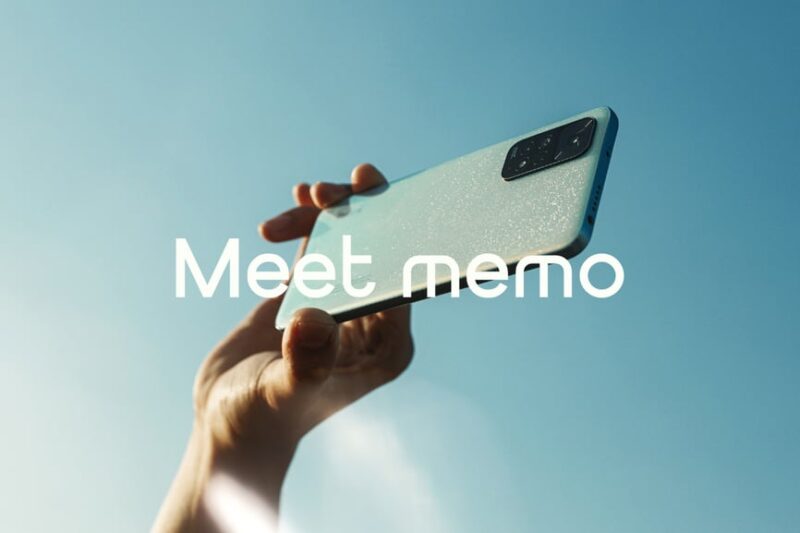
Getboreg is a tech-inspired sans-serif font with a modern, minimalist aesthetic. Its clean lines and futuristic feel make it ideal for technology logos, digital interfaces, and contemporary branding in the tech industry.
Cyber Stan
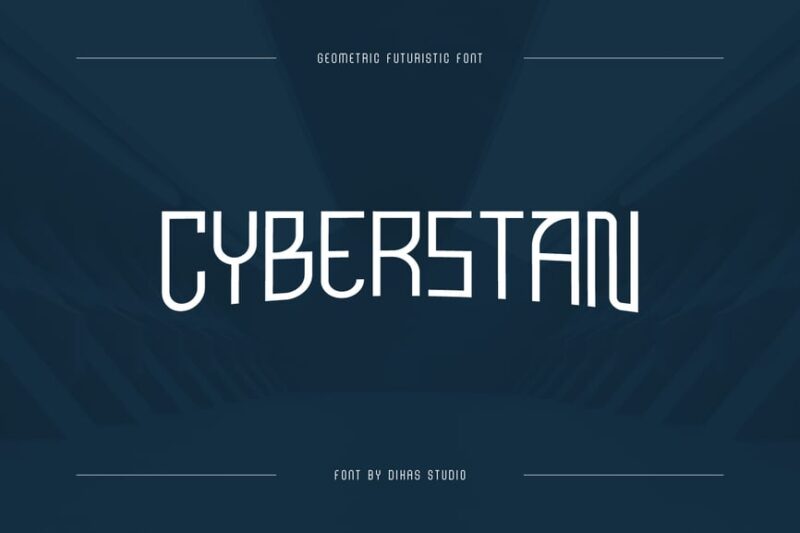
Cyber Stan is a sans-serif font with a strong digital and cyberpunk influence. Its futuristic design makes it perfect for creating tech-related graphics, sci-fi themed projects, and modern digital branding that requires an edgy, technological feel.
Delicatus
![]()
Delicatus is a slim pixel typeface that offers a delicate take on the 8-bit aesthetic. This decorative font is ideal for creating refined retro-inspired designs, minimalist game interfaces, and unique digital art with a nostalgic touch.
Cyber Zen
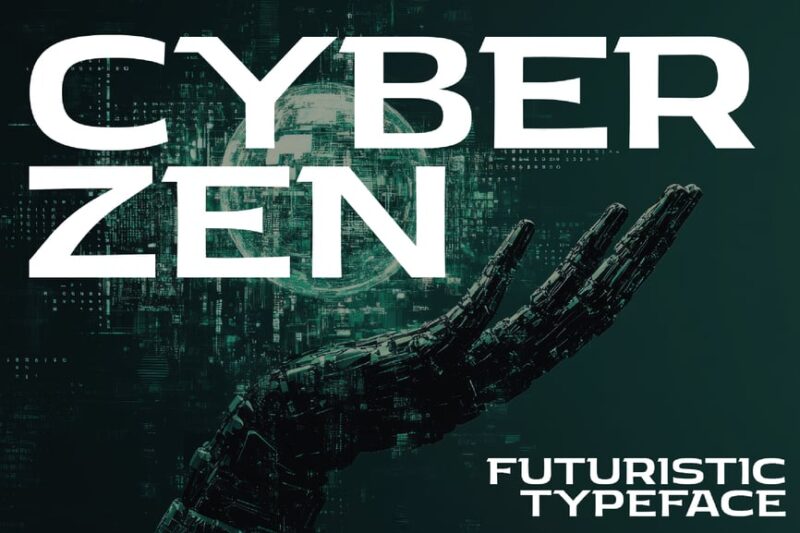
Cyber Zen is a futuristic sans-serif typeface that blends sleek design with a touch of Eastern influence. This wide font is ideal for creating modern tech branding, sci-fi themed projects, and innovative digital interfaces with a unique cultural twist.
AOT Lost Contact
![]()
AOT Lost Contact is a contemporary pixel font that modernizes the classic 8-bit aesthetic. This decorative typeface is perfect for creating cutting-edge digital designs, modern game interfaces, and unique branding that blends retro and futuristic elements.
Aeogo Box
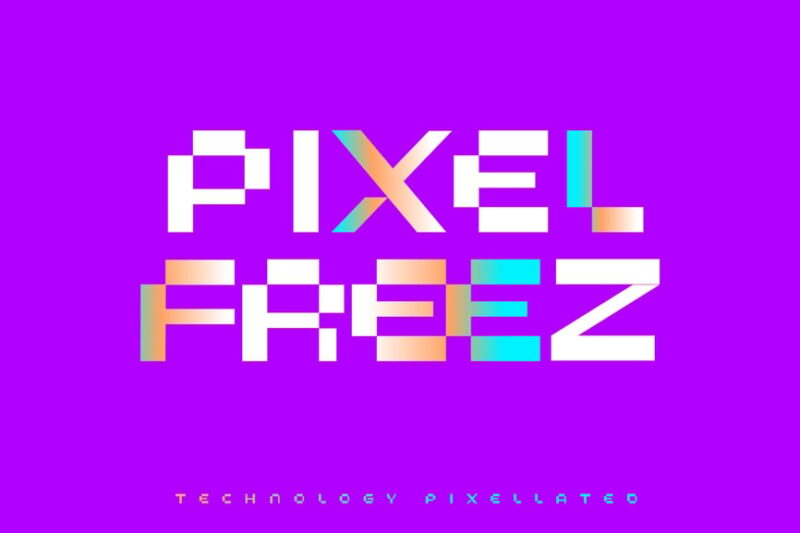
Aeogo Box is a geometric decorative font with a strong AI-inspired aesthetic. Its unique boxed design makes it ideal for creating futuristic logos, tech-related infographics, and innovative digital interfaces in the realm of artificial intelligence and advanced technology.
Cyborg
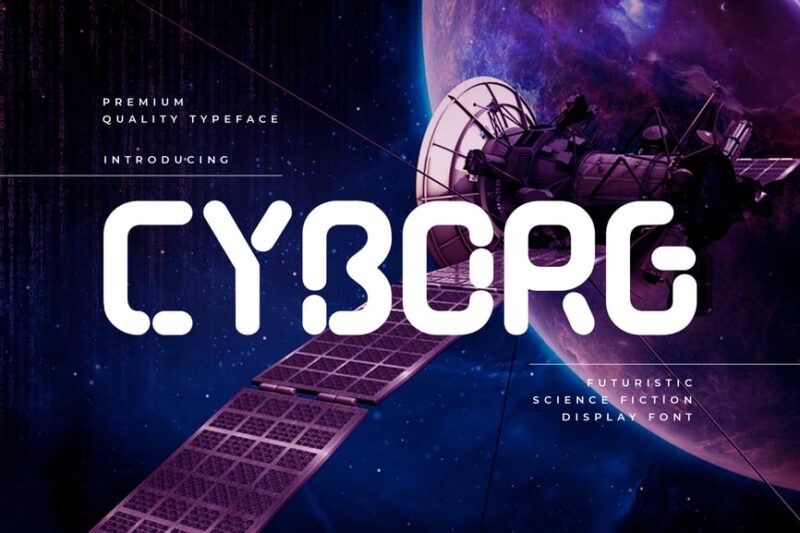
Cyborg is a futuristic technology typeface that combines sans-serif and decorative elements. This font is perfect for creating sci-fi themed designs, tech branding, and digital interfaces that require a bold, mechanical aesthetic with a touch of human-machine integration.
CyberGreek
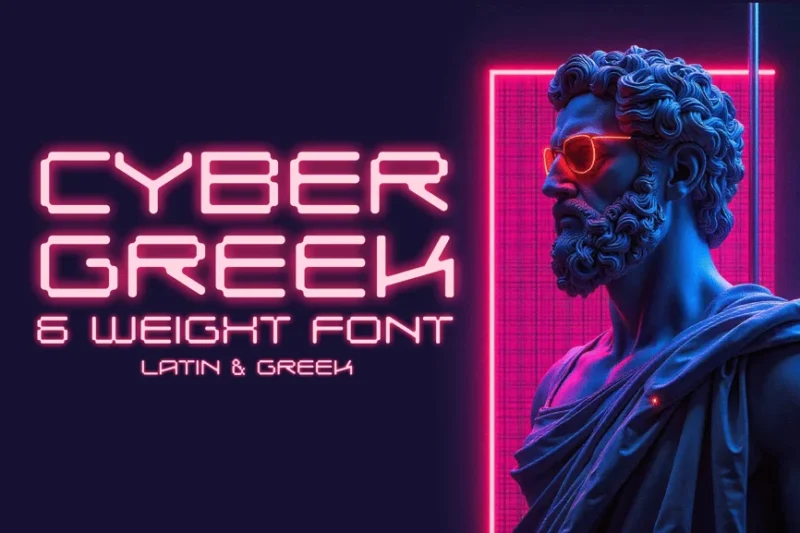
CyberGreek is a unique neon font that blends cyberpunk aesthetics with Greek-inspired letterforms. This decorative sans-serif typeface is ideal for creating futuristic designs with a classical twist, tech-themed event graphics, and innovative branding in the digital space.
Zerpixl Volt
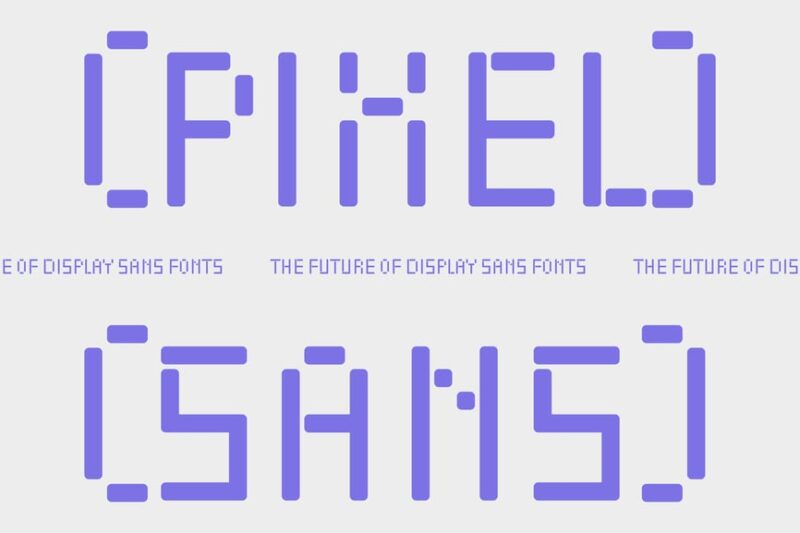
Zerpixl Volt is a tech and science-inspired decorative font with a unique pixelated structure. Its innovative design makes it ideal for creating futuristic graphics, science-themed presentations, and cutting-edge branding in the fields of technology and scientific research.
Digital Caliper

Digital Caliper is a futuristic decorative typeface with a strong sci-fi and scientific influence. This font is perfect for creating tech-oriented designs, science fiction book covers, and innovative branding for companies in the fields of precision technology and scientific instruments.
Groutpix Flow
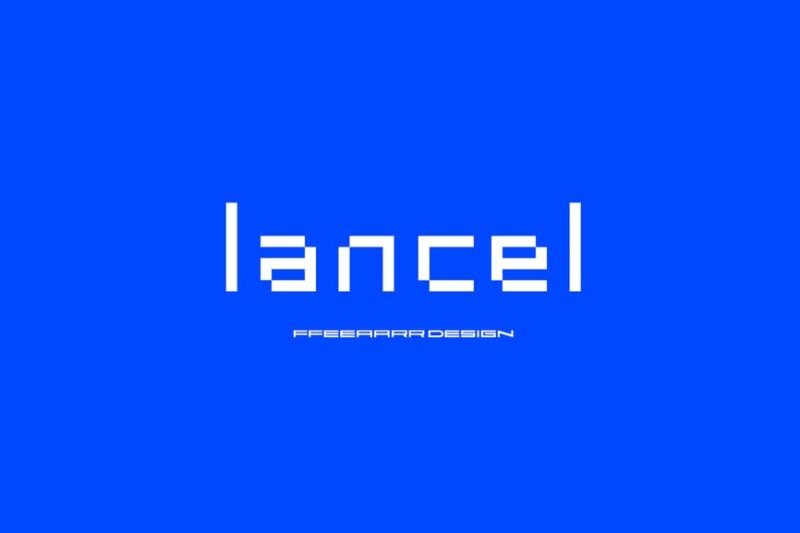
Groutpix Flow is a decorative font that combines pixel art with geometric shapes. Its unique flowing design makes it ideal for creating dynamic digital art, tech-inspired motion graphics, and innovative branding that requires a blend of retro and modern aesthetics.
Flight
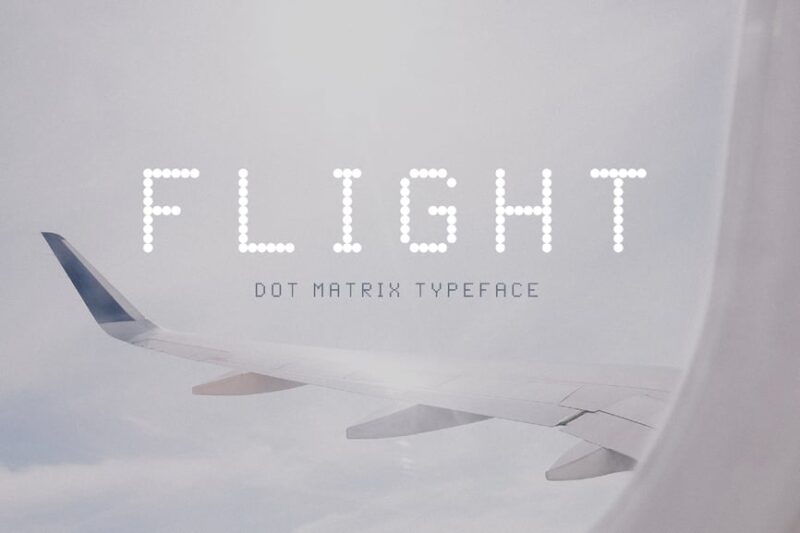
Flight is a dot matrix typeface that evokes the aesthetics of early digital displays. This decorative font is perfect for creating retro-futuristic designs, aviation-themed graphics, and unique branding that requires a classic tech feel with a touch of nostalgia.
What Are Computer Fonts, Really?
Before we dive into the fun stuff, let’s get our terminology straight. Computer fonts are digital files that contain the mathematical instructions for rendering typefaces on screens and in print.
Unlike the old days of physical type, where each letter was a piece of metal, computer fonts are essentially sophisticated software that tells your computer how to draw each character. Pretty cool when you think about it – every “A” you see on screen is being calculated and rendered in real-time.
There are several types of computer font formats you’ll encounter:
TrueType Fonts (.ttf) are probably what most people think of when they hear “computer fonts.” Developed by Apple and later adopted by Microsoft, these fonts use mathematical curves to define letterforms, making them scalable to any size without losing quality.
OpenType Fonts (.otf) are the newer, more sophisticated cousins of TrueType. They support more advanced typographic features like ligatures, alternate characters, and extensive language support.
Web Fonts come in various formats optimized for online use, including WOFF and WOFF2, which compress font data for faster loading on websites.
System Fonts are the default typefaces that come pre-installed on your computer or device. These are the workhorses of digital typography.
The Evolution of Computer Fonts: From Pixels to Perfection
Let me take you on a little trip down memory lane. Back in the early days of computing, fonts were simple bitmaps – literally just dots arranged to form letters. Each size required a separate font file, and scaling up meant jagged, pixelated edges.
Then came PostScript fonts in the 1980s, which used mathematical descriptions instead of bitmaps. Suddenly, fonts could scale smoothly to any size. This was revolutionary for desktop publishing and graphic design.
The 2026s brought us TrueType, followed by OpenType in the late ’90s. Each advancement added more sophistication – better rendering, more language support, and advanced typographic features that would make classical typographers weep with joy.
Today’s computer fonts are incredibly sophisticated. They can include thousands of characters, support multiple scripts, adapt to different screen densities, and even include variable weight and width adjustments within a single file.
System Fonts: The Unsung Heroes of Digital Design
System fonts are the default typefaces that ship with operating systems. They might not seem glamorous, but they’re absolutely crucial for user interface design and digital accessibility.
Windows System Fonts have evolved dramatically over the years. From the basic Arial and Times New Roman of early Windows to the sophisticated Segoe UI family that defines modern Windows interfaces, Microsoft has invested heavily in readable, functional typography.
macOS System Fonts reflect Apple’s design philosophy perfectly. The San Francisco font family, introduced with macOS El Capitan, was specifically designed for optimal readability on Apple’s various screen sizes and resolutions.
Google Fonts and Web Typography have democratized access to quality typefaces. What started as a small collection has grown into a massive library of open-source fonts that anyone can use for free.
The beauty of system fonts lies in their reliability. They’re always available, optimized for their platforms, and tested extensively for readability across different contexts.
Choosing the Right Computer Font for Your Project
Selecting the perfect computer font isn’t just about what looks pretty – though that certainly matters. It’s about matching the typeface to your project’s goals, audience, and technical requirements.
Consider Your Medium First. A font that looks gorgeous in print might be a nightmare to read on a mobile screen. Computer fonts optimized for screen reading often have different characteristics than their print counterparts – slightly wider characters, more open spacing, and stronger stroke contrast.
Think About Hierarchy. Most projects need more than one font. You’ll want something for headlines, body text, captions, and possibly interface elements. The key is choosing fonts that work harmoniously together while providing clear visual distinction.
Factor in Technical Constraints. Will your fonts need to work across different browsers? Do you need extensive language support? Are file sizes a concern? These practical considerations can significantly narrow your options.
Don’t Forget About Licensing. Not all computer fonts are free to use, especially for commercial projects. Always verify licensing terms before committing to a typeface.
The Science Behind Screen-Optimized Typography
Here’s where things get technical – and fascinating. Computer fonts designed for screen use employ numerous tricks to ensure optimal readability across different devices and viewing conditions.
Hinting is a process where font designers add instructions to help letters render clearly at small sizes. It’s like giving your computer specific guidance on how to arrange pixels for the sharpest possible text.
Subpixel Rendering takes advantage of the red, green, and blue subpixels in LCD displays to effectively triple the horizontal resolution for text. This technology makes fonts appear smoother and more precise on screen.
Responsive Typography goes beyond just scaling fonts up and down. Modern computer fonts can adjust their weight, spacing, and even character shapes based on viewing context.
Variable Fonts: The Future of Computer Typography
Variable fonts represent the next evolution in computer font technology. Instead of having separate files for different weights and styles, a single variable font file contains the entire design space – you can adjust weight, width, slant, and even custom parameters in real-time.
This technology opens up incredible possibilities for responsive design and creative expression while reducing file sizes and loading times. It’s like having an entire font family compressed into a single, smart file.
Common Computer Font Mistakes (And How to Avoid Them)
Even experienced designers sometimes make rookie mistakes with computer fonts. Here are the big ones to watch out for:
Using Too Many Fonts is the cardinal sin of digital typography. Stick to 2-3 fonts maximum for most projects. Your design will look more cohesive and professional.
Ignoring Readability for Style might seem artistic, but if people can’t read your text, you’ve failed as a communicator. Always prioritize legibility, especially for body text.
Forgetting About Loading Performance can kill the user experience on websites. Large font files mean slow loading times, which means frustrated users.
Not Testing Across Devices is a recipe for disaster. That perfect font choice on your high-resolution monitor might be completely illegible on a smartphone.
Tools and Resources for Computer Font Management
Managing computer fonts effectively requires the right tools and workflows. Whether you’re a designer working with hundreds of typefaces or just someone who wants better organization, these resources will help.
Font Management Software like Adobe Fonts, FontExplorer, or Suitcase Fusion can help you organize, preview, and activate fonts as needed. These tools prevent system slowdowns and keep your font library manageable.
Web Font Services such as Google Fonts, Adobe Fonts, and Typekit provide easy access to quality typefaces with proper licensing and optimization for web use.
Font Identification Tools can help you identify that perfect typeface you spotted in the wild. Services like WhatTheFont and Font Squirrel’s Matcherator use image recognition to suggest font matches.
The Psychology of Computer Font Choice
This might sound abstract, but different computer fonts genuinely evoke different emotional responses. Understanding these psychological associations can make your design choices more effective.
Serif Fonts tend to feel traditional, trustworthy, and authoritative. They’re still the go-to choice for formal documents and publications that want to convey credibility.
Sans-Serif Fonts feel modern, clean, and approachable. They dominate user interface design and contemporary branding for good reason.
Script and Decorative Fonts add personality and emotion but should be used sparingly. They’re perfect for headlines and special applications but can become tiresome in large amounts.
The key is matching the font’s personality to your project’s goals and audience expectations.
Accessibility and Computer Fonts
Designing with accessibility in mind isn’t just good practice – it’s essential for creating inclusive digital experiences. Computer font choices play a crucial role in accessibility.
Dyslexia-Friendly Fonts like OpenDyslexic or Lexie Readable use specific design principles to improve readability for people with dyslexia. These include weighted bottoms on characters and increased spacing.
High Contrast and Size Considerations ensure that text remains readable for users with visual impairments. This means choosing fonts that maintain clarity at large sizes and work well with screen readers.
Language Support becomes crucial when designing for global audiences. Make sure your chosen computer fonts include the character sets needed for your target languages.
Legal Considerations: Font Licensing in the Digital Age
Font licensing might not be the most exciting topic, but it’s absolutely crucial for anyone using computer fonts professionally. Using fonts without proper licensing can result in serious legal consequences.
Commercial vs. Personal Use licensing often differs significantly. A font that’s free for personal projects might require payment for commercial use.
Web Font Licensing adds another layer of complexity. Some fonts that you can legally use in print materials might not be licensed for web use.
Open Source Alternatives like those found in Google Fonts offer worry-free licensing for most use cases. When in doubt, stick with open source options or purchase proper commercial licenses.
The Future of Computer Fonts
Looking ahead, computer font technology continues to evolve at a rapid pace. We’re seeing exciting developments in areas like:
Artificial Intelligence is beginning to assist in font creation and optimization, potentially revolutionizing how typefaces are designed and refined.
Augmented and Virtual Reality present new challenges for font rendering and readability in three-dimensional spaces.
Advanced Variable Font Features will likely expand beyond basic weight and width adjustments to include more creative parameters.
Improved Screen Technologies like higher pixel densities and better color reproduction will continue to influence font design principles.
Expert Tips for Working with Computer Fonts
After years of working with digital typography, here are my top recommendations for anyone serious about computer fonts:
Build a Curated Collection rather than hoarding every free font you find. Quality over quantity always wins in professional work.
Test Early and Often across different devices, browsers, and viewing conditions. What looks perfect on your design monitor might be illegible elsewhere.
Understand Font Pairing Principles to create harmonious typographic systems. Contrast is good, but clash is bad.
Stay Updated on font technology and licensing changes. The digital typography landscape evolves quickly.
Invest in Quality when budget allows. Premium fonts often include better spacing, more complete character sets, and superior technical optimization.
Conclusion: The Art and Science of Digital Typography
Computer fonts represent a fascinating intersection of technology, art, and communication. They’re simultaneously software and creative expression, mathematical precision and human emotion.
Whether you’re designing a website, creating a presentation, or just trying to make your emails look more professional, understanding computer fonts empowers you to communicate more effectively in our digital world.
The typefaces we choose shape how our messages are received and understood. They can make the difference between a design that feels cheap and amateur versus one that appears polished and professional.
So next time you’re selecting a font for a project, remember: you’re not just choosing letters. You’re selecting a voice for your message, a personality for your brand, and a user experience for your audience.
Take the time to choose wisely. Your readers – and your designs – will thank you for it.
In the end, great computer font choices are like great design itself: when done well, they’re invisible. They simply help your content shine without drawing attention to themselves. And isn’t that what all good typography should do?

